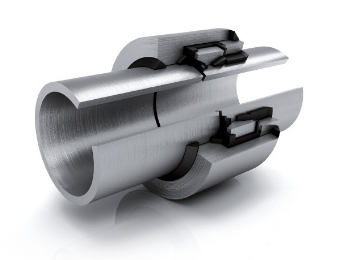Much of the world runs on pipelines. When you drive your car, the fuel that you use will probably have passed under pressure through pipelines at some stage. The water that you drink, likewise, just like the gas that you use to heat your dinner. And these pipelines depend on monolithic insulating joints.
This is because pipelines are subject to corrosion, just like any metal object that is exposed to the elements. Whether overground, underwater or buried underground, pipelines need to be protected against damage from water and the air, as well as electric currents generated by lightning.
Simpler, easier to use and more effective than older anti-corrosion methods
Monolithic insulating joints (or isolation joints) provide just such protection. Specially designed to be shock absorbent and insulated against the electrical charge, they isolate sections of the pipeline so that currents can only pass so far. Materials placed within the monolithic isolation joint also work by attracting electrical charge and preventing corrosion. This is achieved by something called cathode protection - where the material in the joint becomes an anode, and the pipeline becomes a cathode. The anode protects the pipeline from corrosion. You can see the same devices attached to ships, while they are also installed in concrete constructions and on bridges as well. Without them, complex engineering would be extremely difficult.
The advantages of using the monolithic isolation joint are that this kind of joint avoids small parts such as gaskets and flanges, and can be produced to exacting standards of precision. They can be ordered in whatever pipe size is required and sealed easily and safely without the need for welding. They can also be delivered to clients pre-tested and produced to the specifications of the client, avoiding the need for technicians to attend to the installation process.
Save money and prevent accidents by using the latest technology
Every monolithic insulating joint can be fully customized for the needs of each client. They are adapted for both main and service line applications and come in a wide range of different diameters.
By installing a monolithic insulating joint at periodic points along the pipeline, firms can prevent leakages in pipelines carrying liquids such as water, liquid gas and petroleum, and also stop electric currents passing through the pipe casing, improving safety. They are a cheap, effective solution to the problems faced by pipeline maintenance operations across the world.
Previously, oil and gas firms have often relied on less effective and more expensive insulating flange kits. With the need to avoid industrial accidents and financial losses through leakage greater than ever, it makes sense to invest in the most efficient way to safeguard pipelines against corrosion. That is why European and Middle Eastern firms have already embraced isolation joints, and why American operators are following suit.
Ref: http://www.meccanicasegrino.com/the-beauty-of-monolithic-insulating-joints.aspx

